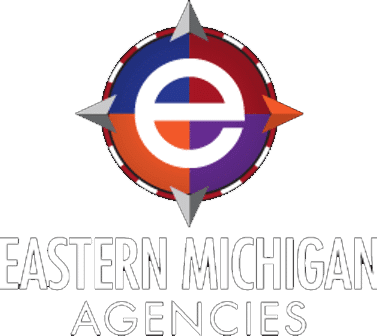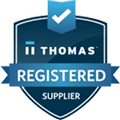Safety in the workplace isn’t just about hard hats and caution signs anymore. It has become an integral part of human resources (HR) responsibilities. As businesses evolve and priorities shift, the role of HR professionals is expanding beyond hiring, training, and managing employees. Now, HR teams are taking over safety as well. But what does this transition entail, and how can HR professionals ensure they are equipped to handle this responsibility?
Changing Landscape of HR and Safety
Gone are the days when safety was solely the domain of specialized safety officers. Today, the lines between HR and safety functions are blurring, resulting in a more integrated approach. This integration is driven by the understanding that ensuring employee well-being and minimizing workplace risks are interconnected. HR professionals are at the forefront of championing these efforts.
With this change comes a new set of expectations for HR professionals. It’s not just about conducting interviews and handling payroll anymore. HR professionals are now expected to be safety-conscious and proactive in identifying potential hazards and mitigating risks.
Understanding Regulatory Compliance
One of the fundamental aspects of ensuring workplace safety is complying with safety regulations and standards. HR professionals must familiarize themselves with these regulations and understand their implications for various HR processes. This includes areas such as recruitment, onboarding, training, and even employee offboarding.
Identifying and Assessing Risks
HR professionals are uniquely positioned to identify and assess risks associated with various HR processes. From evaluating ergonomic concerns in office spaces to analyzing potential hazards during training sessions, HR can play a crucial role in preventing accidents and injuries.
Collaborating with safety experts is essential in this regard. By working hand in hand with safety specialists, HR professionals can gain insights into risk assessment methodologies and implement effective preventive measures.
Safety Training and Communication
Effective safety training is a cornerstone of a safe workplace. HR professionals are responsible for developing comprehensive safety training programs for employees at all levels. These programs should cover everything from basic safety protocols to emergency response procedures.
But it’s not just about developing the content; communication matters too. HR professionals need to ensure that safety protocols are communicated clearly and consistently to all employees. Using simple language and relatable examples can help ensure that safety messages are understood and followed.
Safety Culture and Employee Engagement
Creating a culture of safety requires the active involvement of every employee. HR professionals can foster this culture by leading by example, incorporating safety discussions into regular meetings, and recognizing employees who prioritize safety.
Engaging employees in safety initiatives can be achieved through open dialogue and involving them in safety-related decisions. When employees feel that their input is valued, they are more likely to embrace safety practices.
Managing Incidents and Emergencies
No matter how comprehensive the safety measures are, incidents can still occur. HR professionals need to be prepared to manage and coordinate responses during emergencies. This includes having well-defined incident response plans and ensuring that employees know what to do in critical situations.
Collaboration with safety teams and clear communication are vital when responding to emergencies. HR professionals can act as the bridge between employees and safety experts, facilitating a swift and effective response.
Continuous Improvement and Feedback
Safety practices should never remain static. HR professionals should establish mechanisms for collecting feedback from employees regarding safety concerns. Regular surveys, suggestion boxes, and open-door policies can encourage employees to share their observations and suggestions for improvement.
Using this feedback, HR professionals can iterate on safety practices, implement necessary changes, and ensure that safety remains a dynamic and evolving aspect of the organization.
Measuring Safety Performance
To gauge the effectiveness of safety efforts, HR professionals must establish metrics that reflect safety performance. These metrics can include the number of safety incidents, response times during emergencies, completion rates of safety training, and employee compliance with safety protocols.
Incorporating safety metrics into HR’s key performance indicators (KPIs) emphasizes the organization’s commitment to safety and helps track progress over time.
Addressing Challenges and Concerns
Integrating safety into the HR function comes with its own set of challenges. Balancing safety concerns while respecting employee privacy, addressing resistance to change, and navigating potential conflicts are some common hurdles.
To overcome these challenges, HR professionals should communicate openly, provide clear justifications for safety measures, and offer training to address concerns.
Legal and Ethical Considerations
Safety management intersects with legal and ethical considerations. HR professionals must strike a balance between ensuring safety and respecting employee rights. Implementing safety measures while considering data privacy and employee consent is crucial.
HR professionals should stay updated with relevant laws and regulations and collaborate with legal experts when necessary.
Role of Technology in Safety
Technology can significantly aid safety management. HR professionals can leverage HR software and data analytics to identify trends, predict potential risks, and make informed decisions. Automated safety training modules and incident reporting systems streamline safety-related tasks.
Utilizing technology helps HR professionals make data-driven decisions, enhancing the overall effectiveness of safety initiatives.
Collaboration with Safety Professionals
While HR professionals take on more safety responsibilities, collaboration with dedicated safety professionals remains essential. Safety specialists bring in-depth expertise and insights that complement HR’s efforts. A strong partnership between HR and safety teams ensures a holistic approach to workplace safety.
Case Studies
Examining real-world examples of successful HR-driven safety initiatives provides valuable insights. These case studies showcase how organizations have effectively integrated safety into their HR functions, leading to improved workplace well-being and reduced risks.
Conclusion
Taking over safety as HR is more than a shift in responsibilities; it’s a commitment to ensuring the well-being of every employee. As HR professionals embrace this expanded role, they become champions of a culture of safety, fostering an environment where employees can thrive without compromising their health and well-being.
Frequently Asked Questions (FAQs)
1. How does the integration of safety and HR benefit organizations?
Integrating safety and HR functions leads to a more cohesive approach to employee well-being, improved risk management, and enhanced organizational resilience.
2. What role does employee engagement play in promoting workplace safety?
Employee engagement is crucial for creating a culture of safety. Engaged employees are more likely to follow safety protocols and actively contribute to identifying potential hazards.
3. How can HR professionals balance employee privacy with safety concerns?
HR professionals can strike a balance by ensuring that safety measures are proportionate to risks, obtaining employee consent for data collection, and complying with relevant data protection laws.
4. What technology tools can HR professionals use for safety management?
HR professionals can utilize HR software, data analytics, incident reporting systems, and automated safety training modules to enhance safety management efforts.
5. How can organizations measure the success of their HR-driven safety initiatives?
Organizations can measure success by tracking safety metrics such as incident rates, response times, completion rates of safety training, and improvements in safety culture.







